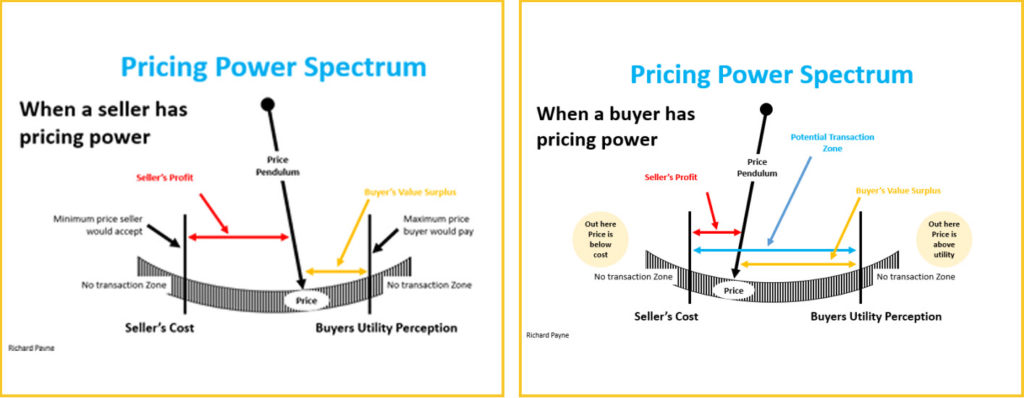“Unfortunately, markets have been more volatile recently, which makes it more expensive for us to buy and sell currencies — so we need to raise our fees to cover those costs.”
I’ve been getting lots of notes like this lately. Which reminds me that costs clearly do play a significant role in determining prices offered which is something we have all experienced. and to the extent that costs play a role in price setting the “value” I experience from acquiring a product of service is influenced by a supplier’s cost.
Most people would agree that a buyer’s value judgement determines whether of not the buyer accepts the price offered and a transaction occurs. That value judgement will be partly subjective (i.e. the use value and how the buyer feels about the product or service – I will call this utility) and partly objective (i.e. what the net cost of an alternative source of supply may be relative to the benefit received.) The point here is value is rarely purely subjective and for some products or services it may be close to purely objective.
The saying “price is what you pay value is what you get” is attributed to Warren Buffett which makes sense. But I think it would be more accurate to say price is what you pay and utility is what you get; I consider utility in this context to be the value of the benefit I receive when the job, product or service gets done for me. The upper limit of that utility is the boundary of my willingness to pay (WTP).
For the majority of products or services (excluding Giffen & Veblen products) I suggest utility is independent of the price i.e. a buyer does not experience more or less utility when price changes but does experience a change in value. Given this it seems to me that value is the difference between a customer’s willingness to pay and the price paid which in turn leads to the conclusion that when costs drive prices up, the value a buyer experiences declines which in turn means buyers should be concerned about suppliers’ costs.
Therefore, I conclude, at the end of the day costs do drive value through their impact on price.

